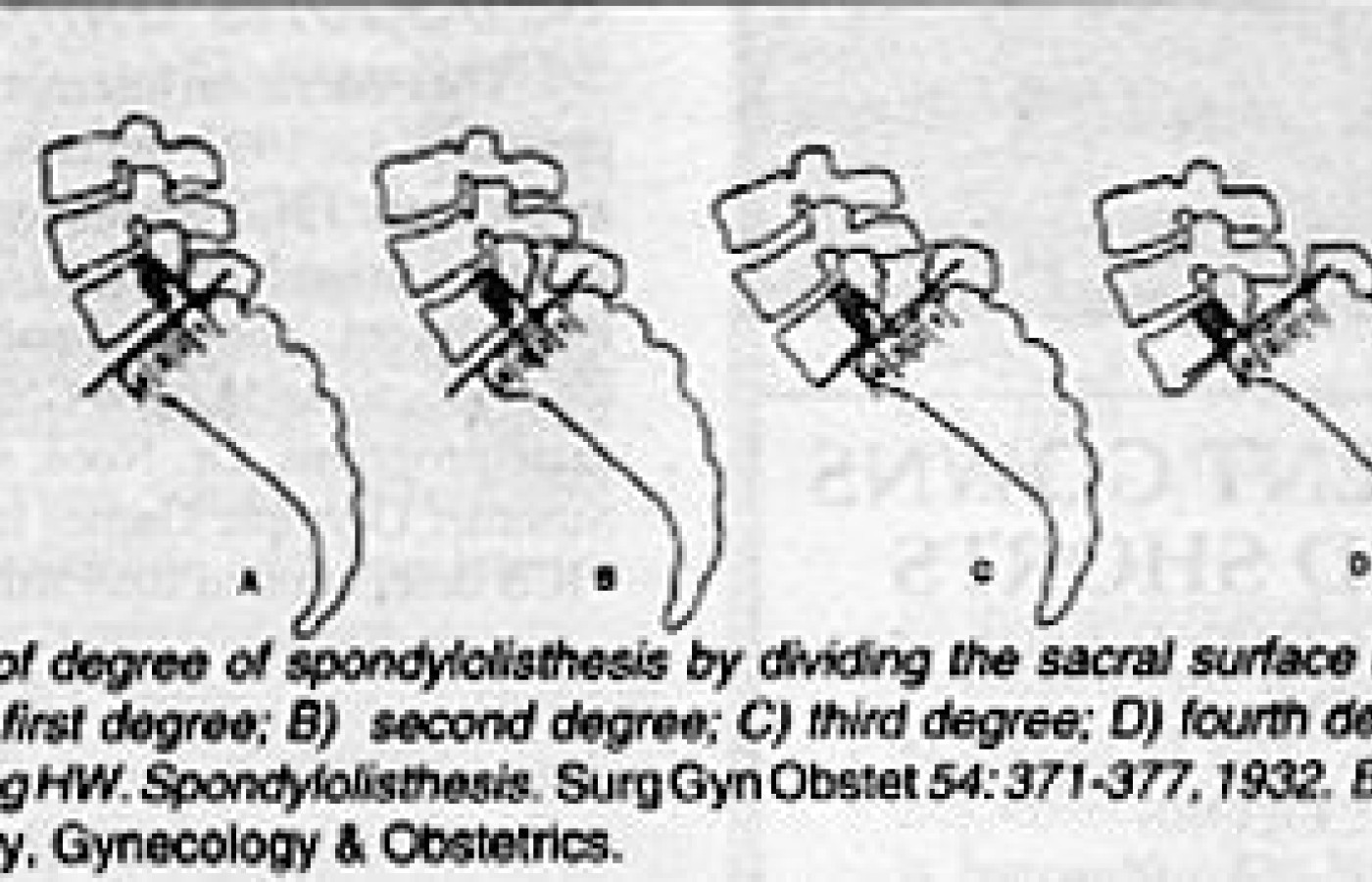Some doctors thrive in a personality-based clinic and have a loyal following no matter what services or equipment they offer, but for most chiropractic offices who are trying to grow and expand, new equipment purchases help us stay relevant and continue to service our client base in the best, most up-to-date manner possible. So, regarding equipment purchasing: should you lease, get a bank loan, or pay cash?
Spondylolysis and Spondylolisthesis
Spondylolysis and Spondylolisthesis often become confusing. Spondylolysis is a term used to describe a defect in the pars interarticularis or a break in the pars.
The most common level for a spondylolysis is L5. It is rarely found in the cervical spine. It is unilateral in about 1/6 to 1/3 of cases. The cause of a spondylolysis is felt to be repeated trauma, as in a stress fracture, to a par interarticularis that has been inherently weakened by hypoplasia or dysplasia of the pars, most often developmental. The most accepted documented reason for a spondylolysis in young children is torsional stresses or repeated trauma to a hypoplastic or dysplastic pars, ultimately causing a stress fracture. There are however instances when a single traumatic event will cause a spondylolysis.
The best view to determine the presence of a spondylolysis in on the oblique view. If there is a question as to whether or not there is one present, a CT scan will demonstrate this region very clearly. If a possible recent fracture is suspected a bone will demonstrate whether or not the spondylolysis is recent.
Spondylolisthesis is defined as a subluxation of one vertebral body on another; displacement generally is understood that the superior vertebral body is displaced anterior in relationship to the inferior vertebral body.
Spondylolisthesis may be classified as isthmic, degenerative, dysplastic, traumatic or pathologic. In isthmic spondylolisthesis, the cause of the spondylolisthesis is due to a spondylolysis of the pars, and therefore allows the anterior slippage of one vertebrae on another. Dysplastic spondylolisthesis is often due to developmental hypoplasia of the pars, which may be elongated, allowing for the anterior slippage of one vertebrae on another. Traumatic spondylolisthesis is almost always due to a fracture of the posterior arch which allows for slippage of the fractured vertebrae on the adjacent segment. The best example is the "hangman's fracture." Degenerative spondylolisthesis is due to alteration in the biomechanics of the facets, which generally demonstrated marked degenerative changes and allow for the spillage of one vertebrae on another. Neoplastic processes can cause destruction of a vertebral body, again allowing for the displacement of one vertebrae on another, which is termed a pathologic spondylolisthesis.
It is important to note what type of spondylolisthesis is present for clinical management of the patient. There is also a grading system for determining the stability of a spondylolisthesis. This system I am sure everyone is aware of, however, it is more important to determine if there is in fact a progression of the anterior slippage. Any progression of the anterior slippage is even more important than the grade of spondyloslisthesis. If there is radiographic evidence of an increase in the anterior displacement, that alone is enough to document instability.

Grading of degree of spondylolisthesis by dividing the sacral surface in four equal parts. A) first degree; B) second degree; C) third degree; D) fourth degree. From: Meyerding HW. Spondylolisthesis. Surg Gyn Obstet 54: 371-377, 1932. By permission of Surgery, Gynecology & Obstetrics.
Deborah Pate, DC, DACBR
San Diego, California



